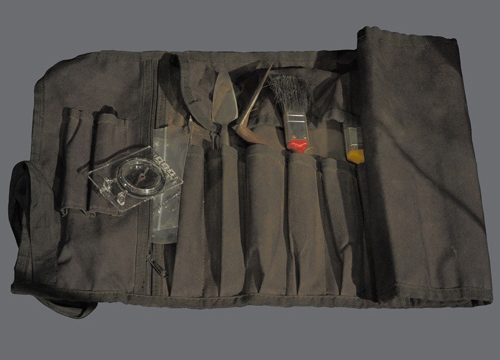Jessie Garland and Kirsa Webb, Underground Overground Archaeology

A giant jigsaw puzzle

Jessie Garland and Kirsa Webb, Underground Overground Archaeology
Once a site has been identified, archaeologists will begin by carefully walking across it in a pattern, recording things that are out of place, unusual shapes in the ground, and any objects lying on the surface.
Then they might examine the site using special equipment like a resistivity meter or a photographic probe, to see if this locates hidden features.
Modern archaeologists will also look at a site from the sky using aerial photography or satellite imagery, to see the remains of large structures that are difficult to spot at ground level.
Archaeological tools
Used by Underground Overground Archaeology for excavations in Christchurch
Jessie Garland Collection
The next step is the excavation.
Archaeological sites are a little like a giant jigsaw pule. To solve the pule, archaeologists will divide a site up into a series of squares, and carefully dig out each square one at a time using special tools. As the dirt and rubble is removed, they slowly reveal hidden objects, or the remnants of buildings and structures.
Everything found in each square is recorded on a drawing, and plotted on a map of the whole site, before being photographed and catalogued.

Tool set, used by Jessie Garland at Underground Overground Archaeology